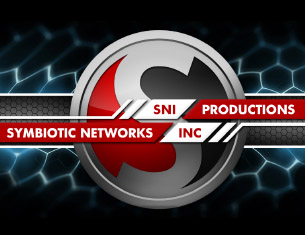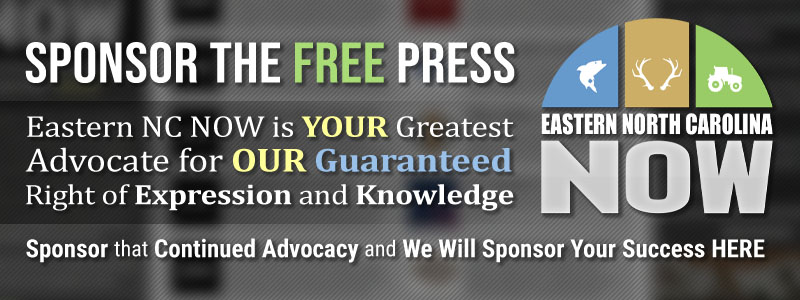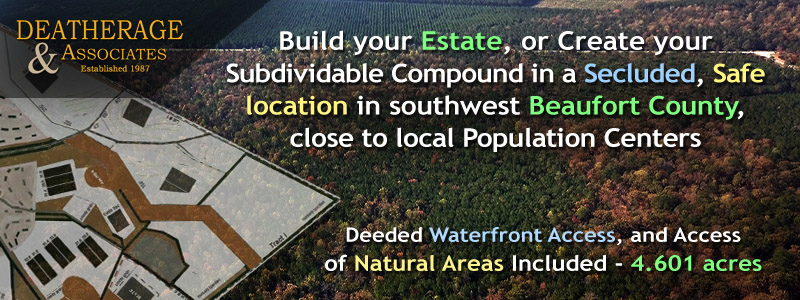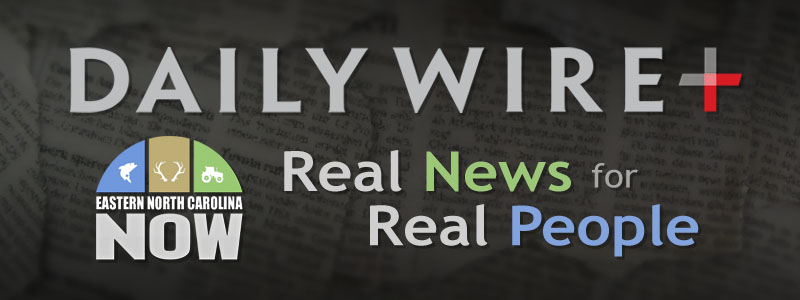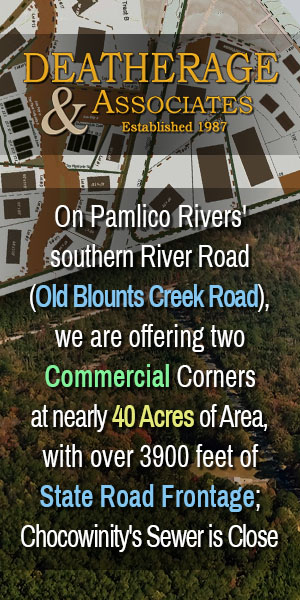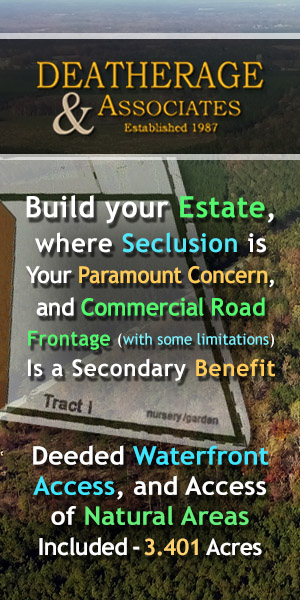Your Basic Needs: Food, Shelter and The TRUTH
Press Briefing by Vice President Pence and Members of the Coronavirus Task Force | November 19, 2020
And I hear a lot now, when we made these announcements this past Monday and then two Mondays ago, about some reticence of people: "Well, did you rush this?" "Was this too fast?" "Is it really safe and is it really efficacious?" The process of the speed did not compromise at all safety, nor did it compromise scientific integrity. It was a reflection of the extraordinary scientific advances in these types of vaccines, which allowed us to do things in months that actually took years before. So I really want to settle that concern that people have about that.
"What about the decision of the data? Who looked at the data? Was that some force that was maybe trying to put something over on you?" No, it was actually an independent body of people who have no allegiance to anyone - not to the administration, not to me, not to the companies - that looked at the data and deemed it to be sound.
Now that data will be examined very carefully by the FDA, who, together with an advisory committee - the Vaccine and Related Biological Products Advisory Committee, or VERPAC - are going to look at that before the FDA makes the decision about putting this forth for an emergency use authorization or, ultimately, for a license.
So we need to put to rest any concept that this was rushed in an inappropriate way. This is really solid.
Now, what does that mean for us? We now, as the Vice President said, are telling you that help is on the way, which has two aspects to it. It means that we need to actually double down on the public health measures as we're waiting for that help to come, which will be soon. We'll be getting vaccine doses into people at high priority at the end of December. We're not talking about shutting down the country. We're not talking about locking down. We're talking about intensifying the simple public health measures that we all talk about: mask wearing, stay being distanced, avoiding congregate settings, doing things to the extent that we can outdoors versus indoors. If we do that, we'll be able to hold things off until the vaccine comes.
Now, I've used that metaphor that "the cavalry is on the way." If you're fighting a battle and the cavalry is on the way, you don't stop shooting; you keep going until the cavalry gets here, and then you might even want to continue fighting.
And then, finally, one other final thing about it. The very impressive efficacy - 94.5 and 95 percent of a vaccine - should motivate individual to realize that this is something you want to participate in. So we're going to be talking to you about it likely here, in the future, about why it's important, as these vaccine doses roll out, why we have to do two things: continue the public health measure and get vaccinated when the vaccine becomes available.
Thank you.
THE VICE PRESIDENT: Thank you, Tony. General?
GENERAL PERNA: Mr. Vice President, thank you very much for this opportunity. So I've been asked to highlight our way ahead on distribution of the vaccine as just talked about by Dr. Fauci and, before that, Vice President Pence.
You know, we are here today because our mission was clear, and our mission to Dr. Moncef Slaoui - my co-leader and, really, heavily responsible for our success - we are here today because we focused on developing, manufacturing, and distributing a safe and effective vaccine and therapeutics to the American people. Our purpose is really clear: Save lives. And it has driven us to this end state, and that's why we're here today.
A couple of things as we get started in our planning: I will tell you that the planning began almost immediately following our ceremony in the Rose Garden on the 15 May. That Monday, we started talking development manufacturing and distribution. It's not a thought that we've had in the last two weeks. It's required extensive planning and detailed work by a collaboration of individuals, which I'll talk about.
A couple of things we decided up front:
One, we were going to be able to deliver the vaccine within 24 hours after EUA. That is distribution to the entire United States of America to include territories and metropolitan cities.
Two, we started with a foundation of expertise. The CDC is the very best at planning and executing distribution of vaccines. We took their core competency, and we aligned it with the capability of planners, project managers, and those who could run campaigns. And, together, this organization has come up with our strategy for distribution.
Third, we took the capacity of the industry, commercial industry, and we brought them into the fold. We wanted to utilize the capability and the capacity that is already established in America, that has a proven track record, that knows how to distribute vaccines, that understands the nuances of ultra-cold chain requirements. We knew if we brought Pfizer, Moderna, McKesson, UPS, FedEx, CVS, Walgreen, and hundreds others together, that we would come up with the best solutions, because innovation towards our end state was our only care. It wasn't about egos and it wasn't about credit. It was about how do we solve this complex problem.
It was clear, immediately following our initial meetings with industry, that we had to have full collaboration, to my fourth point, with the jurisdictions and the states. They had to be a big part of our planning sequence.
So, together, OWS, CDC, industry, and the states and jurisdictions came up with the plan that I'm going to talk to you about here shortly. It is the effort that is almost so common that you will recognize it because we do it every year. We do it when we distribute influenza vaccines. We do it when other vaccines are being distributed. The difference is now we're pushing mass volume of a new vaccine, and so we needed to have a strategy that was collaborated at all levels, with all organizations, in order to execute.
The last thing we needed to do was we had to create a system to see ourselves. We had to be able to see inside of every territory, state, metropolitan city; understand where the vaccine was from fill/finish site to distribution warehouses, down to administration sites, so not only could we maintain the flow of vaccine, but we could account for vaccine that was being administered. That way, we can keep the flow to the American people in a steady drumbeat.
; As we go forward - first slide, please - we will distribute the vaccine accordingly. I direct you to the right side of the slide. This is our end state. This is where we want the vaccines to be. We want the vaccines down at the places where the American people are comfortable - at our hospitals, our doctor's offices; down at CVS, Walgreens; down at the long care - healthcare facilities - places where people are comfortable going. So that's where we started: end state.
Then we went back to Pfizer and Moderna, we laid out the guidelines that I gave you, and with the collaboration of them and the commercial industry for distribution, we came up with our plan. It's relatively simple: We take the Pfizer vaccine. They are capable of distributing on their own; they will utilize FedEx and UPS, in order to execute distribution. Simultaneously, we will ship ancillary kits - needles, syringes, alcohol wipes, and the diluent required for the vaccine to meet the vaccine at the end-state facilities that we're talking about.
For McKesson - or for Moderna vaccine, what we're going to do is we're going to meet up the vaccine with the ancillary kits at a distribution warehouse. We're going to put them together, and then we're going to distribute through FedEx and UPS, down to our administration sites.
So, in simple terms, we're taking it from fill/finish, we're bringing together all the requirements for administering the vaccine, and then we're sending it down to the distribution sites. Any place that a state wants to administer the vaccine, as long as they're enrolled - right? - into our process, we can distribute the vaccine. We can distribute the Pfizer vaccine at a minimum of 975 doses, and the Moderna vaccine at a minimum of 100 doses. We can go to one place in the state or we can go to 10,000 places in the state. The capability and the capacity exist because we came together in a whole-of-America approach.
It is this effort that I can look you in the face and say to you: EUA comes; 24 hours later, vaccines will be distributed out to the American people and be ready for administration.
To this end, our mission is as I stated: safe and effective vaccines to the American people, and we need to do it in the most timely manner possible because it is all about lives.
Thank you, Mr. Vice President.
THE VICE PRESIDENT: Thank you, General. And, General, how many kits have already been started, would you say?
GENERAL PERNA: Mr. Vice President, we already have over a million kits - both the kits that we'll need for the Pfizer vaccine, as well as the Moderna vaccines. Different -
SECRETARY AZAR: One hundred.
GENERAL PERNA: One hundred. Right. Yes, yeah. Excuse me, 100 million. Thank you.
THE VICE PRESIDENT: I knew the answer. I knew the answer.
General Perna, thank you. And as he said, from the time President Trump announced Operation Warp Speed, General Perna and his team have been working literally around the clock to build the distribution plan that you see that's in effect. And I hope you all heard that. I asked him how many of those kits have already been manufactured for merging with - merging with the Moderna product, and they've already assembled 100 million kits that are ready to go. And that's the supplies that are necessary for administering the vaccine.
I must tell you, having received my latest briefing today over at FEMA, from Operation Warp Speed, I think every American can be proud of the fact that we have a plan in place: that the moment that the FDA concludes that that vaccine is safe and effective, we have a system in place to begin, within 24 hours, shipping that vaccines to hospitals, healthcare facilities, and 24 hours after that, literally injecting that vaccine into Americans.
And we'll also be continuing to develop the prioritization working with states about their plans. And maybe Bob Redfield of CDC will reflect on that as well in a moment. CDC will create a recommendation for priorities of who's to be immunized. But if history is a teacher, we know that we'll focus on those most vulnerable; we'll focus on our healthcare workers and first responders at the early going.
But it's - it's truly inspiring to me to see the incredible work that Operation Warp Speed has done. And, General Perna, I want to thank you for your dedication.
With that, as I said, we've continued from the very beginning to operate an approach at the federal level that is federally supported, state managed, locally executed. And we'll continue to respect decisions that state governments are making in efforts to slow the spread.
But - but to be very clear, as President Trump has been very clear: that we do not support another national lockdown and do not believe it is necessary. I think Dr. Fauci actually reflected again on we're not calling for a national lockdown, and we won't.
But beyond that, there have been some actions taken in jurisdictions around the country with regard to closing schools, and I wanted the American people to know that it is - it is the position of this task force, of this administration, and of the CDC that we do not need to close our schools.
Go Back
"What about the decision of the data? Who looked at the data? Was that some force that was maybe trying to put something over on you?" No, it was actually an independent body of people who have no allegiance to anyone - not to the administration, not to me, not to the companies - that looked at the data and deemed it to be sound.
Now that data will be examined very carefully by the FDA, who, together with an advisory committee - the Vaccine and Related Biological Products Advisory Committee, or VERPAC - are going to look at that before the FDA makes the decision about putting this forth for an emergency use authorization or, ultimately, for a license.
So we need to put to rest any concept that this was rushed in an inappropriate way. This is really solid.
Now, what does that mean for us? We now, as the Vice President said, are telling you that help is on the way, which has two aspects to it. It means that we need to actually double down on the public health measures as we're waiting for that help to come, which will be soon. We'll be getting vaccine doses into people at high priority at the end of December. We're not talking about shutting down the country. We're not talking about locking down. We're talking about intensifying the simple public health measures that we all talk about: mask wearing, stay being distanced, avoiding congregate settings, doing things to the extent that we can outdoors versus indoors. If we do that, we'll be able to hold things off until the vaccine comes.
Now, I've used that metaphor that "the cavalry is on the way." If you're fighting a battle and the cavalry is on the way, you don't stop shooting; you keep going until the cavalry gets here, and then you might even want to continue fighting.
And then, finally, one other final thing about it. The very impressive efficacy - 94.5 and 95 percent of a vaccine - should motivate individual to realize that this is something you want to participate in. So we're going to be talking to you about it likely here, in the future, about why it's important, as these vaccine doses roll out, why we have to do two things: continue the public health measure and get vaccinated when the vaccine becomes available.
Thank you.
THE VICE PRESIDENT: Thank you, Tony. General?
GENERAL PERNA: Mr. Vice President, thank you very much for this opportunity. So I've been asked to highlight our way ahead on distribution of the vaccine as just talked about by Dr. Fauci and, before that, Vice President Pence.
You know, we are here today because our mission was clear, and our mission to Dr. Moncef Slaoui - my co-leader and, really, heavily responsible for our success - we are here today because we focused on developing, manufacturing, and distributing a safe and effective vaccine and therapeutics to the American people. Our purpose is really clear: Save lives. And it has driven us to this end state, and that's why we're here today.
A couple of things as we get started in our planning: I will tell you that the planning began almost immediately following our ceremony in the Rose Garden on the 15 May. That Monday, we started talking development manufacturing and distribution. It's not a thought that we've had in the last two weeks. It's required extensive planning and detailed work by a collaboration of individuals, which I'll talk about.
A couple of things we decided up front:
One, we were going to be able to deliver the vaccine within 24 hours after EUA. That is distribution to the entire United States of America to include territories and metropolitan cities.
Two, we started with a foundation of expertise. The CDC is the very best at planning and executing distribution of vaccines. We took their core competency, and we aligned it with the capability of planners, project managers, and those who could run campaigns. And, together, this organization has come up with our strategy for distribution.
Third, we took the capacity of the industry, commercial industry, and we brought them into the fold. We wanted to utilize the capability and the capacity that is already established in America, that has a proven track record, that knows how to distribute vaccines, that understands the nuances of ultra-cold chain requirements. We knew if we brought Pfizer, Moderna, McKesson, UPS, FedEx, CVS, Walgreen, and hundreds others together, that we would come up with the best solutions, because innovation towards our end state was our only care. It wasn't about egos and it wasn't about credit. It was about how do we solve this complex problem.
It was clear, immediately following our initial meetings with industry, that we had to have full collaboration, to my fourth point, with the jurisdictions and the states. They had to be a big part of our planning sequence.
So, together, OWS, CDC, industry, and the states and jurisdictions came up with the plan that I'm going to talk to you about here shortly. It is the effort that is almost so common that you will recognize it because we do it every year. We do it when we distribute influenza vaccines. We do it when other vaccines are being distributed. The difference is now we're pushing mass volume of a new vaccine, and so we needed to have a strategy that was collaborated at all levels, with all organizations, in order to execute.
The last thing we needed to do was we had to create a system to see ourselves. We had to be able to see inside of every territory, state, metropolitan city; understand where the vaccine was from fill/finish site to distribution warehouses, down to administration sites, so not only could we maintain the flow of vaccine, but we could account for vaccine that was being administered. That way, we can keep the flow to the American people in a steady drumbeat.
; As we go forward - first slide, please - we will distribute the vaccine accordingly. I direct you to the right side of the slide. This is our end state. This is where we want the vaccines to be. We want the vaccines down at the places where the American people are comfortable - at our hospitals, our doctor's offices; down at CVS, Walgreens; down at the long care - healthcare facilities - places where people are comfortable going. So that's where we started: end state.
Then we went back to Pfizer and Moderna, we laid out the guidelines that I gave you, and with the collaboration of them and the commercial industry for distribution, we came up with our plan. It's relatively simple: We take the Pfizer vaccine. They are capable of distributing on their own; they will utilize FedEx and UPS, in order to execute distribution. Simultaneously, we will ship ancillary kits - needles, syringes, alcohol wipes, and the diluent required for the vaccine to meet the vaccine at the end-state facilities that we're talking about.
For McKesson - or for Moderna vaccine, what we're going to do is we're going to meet up the vaccine with the ancillary kits at a distribution warehouse. We're going to put them together, and then we're going to distribute through FedEx and UPS, down to our administration sites.
So, in simple terms, we're taking it from fill/finish, we're bringing together all the requirements for administering the vaccine, and then we're sending it down to the distribution sites. Any place that a state wants to administer the vaccine, as long as they're enrolled - right? - into our process, we can distribute the vaccine. We can distribute the Pfizer vaccine at a minimum of 975 doses, and the Moderna vaccine at a minimum of 100 doses. We can go to one place in the state or we can go to 10,000 places in the state. The capability and the capacity exist because we came together in a whole-of-America approach.
It is this effort that I can look you in the face and say to you: EUA comes; 24 hours later, vaccines will be distributed out to the American people and be ready for administration.
To this end, our mission is as I stated: safe and effective vaccines to the American people, and we need to do it in the most timely manner possible because it is all about lives.
Thank you, Mr. Vice President.
THE VICE PRESIDENT: Thank you, General. And, General, how many kits have already been started, would you say?
GENERAL PERNA: Mr. Vice President, we already have over a million kits - both the kits that we'll need for the Pfizer vaccine, as well as the Moderna vaccines. Different -
SECRETARY AZAR: One hundred.
GENERAL PERNA: One hundred. Right. Yes, yeah. Excuse me, 100 million. Thank you.
THE VICE PRESIDENT: I knew the answer. I knew the answer.
General Perna, thank you. And as he said, from the time President Trump announced Operation Warp Speed, General Perna and his team have been working literally around the clock to build the distribution plan that you see that's in effect. And I hope you all heard that. I asked him how many of those kits have already been manufactured for merging with - merging with the Moderna product, and they've already assembled 100 million kits that are ready to go. And that's the supplies that are necessary for administering the vaccine.
I must tell you, having received my latest briefing today over at FEMA, from Operation Warp Speed, I think every American can be proud of the fact that we have a plan in place: that the moment that the FDA concludes that that vaccine is safe and effective, we have a system in place to begin, within 24 hours, shipping that vaccines to hospitals, healthcare facilities, and 24 hours after that, literally injecting that vaccine into Americans.
And we'll also be continuing to develop the prioritization working with states about their plans. And maybe Bob Redfield of CDC will reflect on that as well in a moment. CDC will create a recommendation for priorities of who's to be immunized. But if history is a teacher, we know that we'll focus on those most vulnerable; we'll focus on our healthcare workers and first responders at the early going.
But it's - it's truly inspiring to me to see the incredible work that Operation Warp Speed has done. And, General Perna, I want to thank you for your dedication.
With that, as I said, we've continued from the very beginning to operate an approach at the federal level that is federally supported, state managed, locally executed. And we'll continue to respect decisions that state governments are making in efforts to slow the spread.
But - but to be very clear, as President Trump has been very clear: that we do not support another national lockdown and do not believe it is necessary. I think Dr. Fauci actually reflected again on we're not calling for a national lockdown, and we won't.
But beyond that, there have been some actions taken in jurisdictions around the country with regard to closing schools, and I wanted the American people to know that it is - it is the position of this task force, of this administration, and of the CDC that we do not need to close our schools.
| Beaufort County Emergency Management: COVID-19 Update (11-23-20) | News Services, Government, State and Federal | Beaufort County Emergency Management: COVID-19 Update (11-24-20) |




